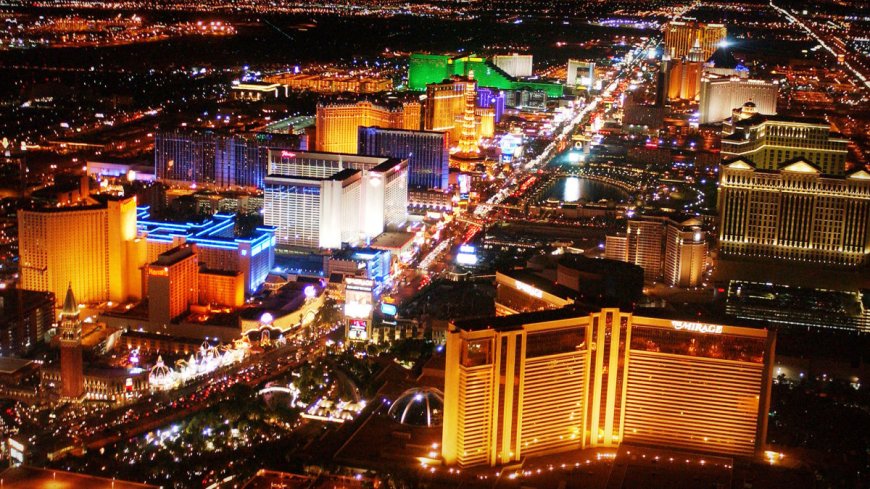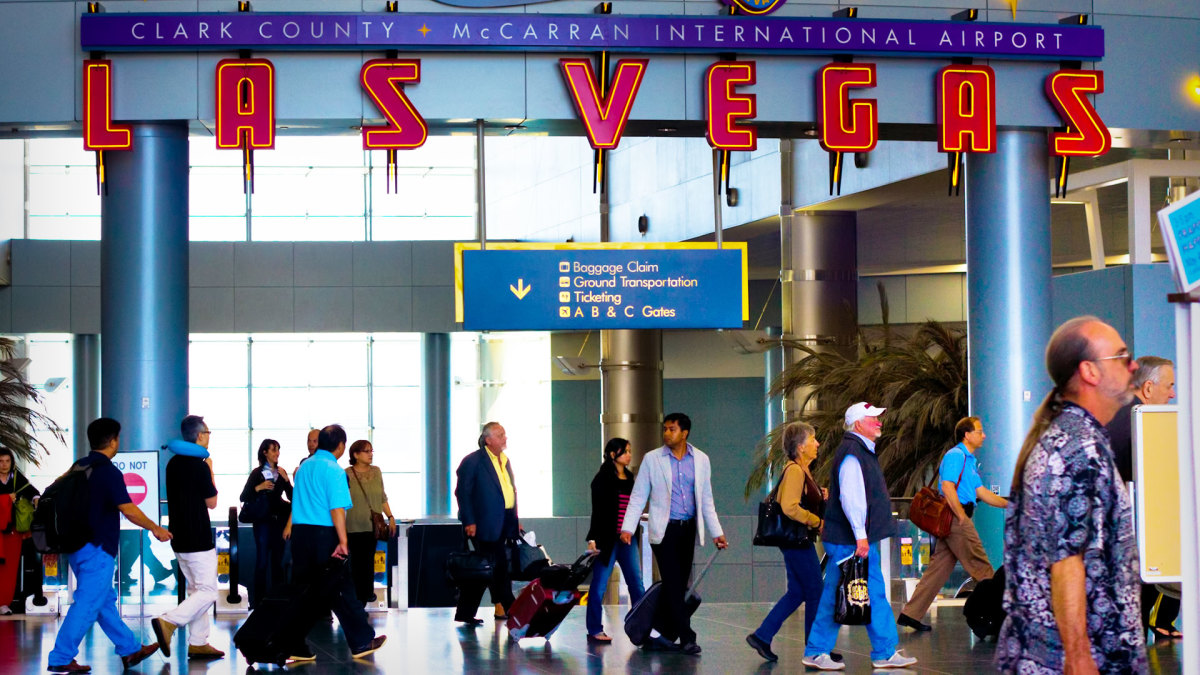Las Vegas Strip gets unlikely help solving a huge problem
Sin City has been packed with tourists and that can create some major pain points during bigger events.

Full-capacity Las Vegas used to happen just a few times a year.
The Strip would sell out for CES, a few other major trade shows, New Year's Eve, and parts of March Madness. When that happens the city's infrastructure weakness becomes evident.
It's hard to get anywhere on the Las Vegas Strip because the street gridlocks with cars and construction have made walking on the Strip difficult. To walk from one Caesars Entertainment (CZR) or MGM Resorts International (MGM) property on the densely-packed south and central sections of the Strip can take an exceptionally long time.
Related: Iconic Las Vegas Strip resort casino going out with a bang
That's because doing so no longer involves walking on the sidewalk. In many areas, the city has built skyways that involve stairs, escalators, and elevators to get pedestrians off the street.
Walking can be very slow going as you not only have to deal with crowds, but also people handing you flyers, "showgirls" selling pictures, drug dealers, and other solicitors. In many ways, however, that's simply part of the Las Vegas Strip show and, even though it's unpleasant, people just accept it.
The worst part of the Las Vegas experience — especially after a major event — actually happens when it's time to go home. Image source: Shutterstock
Las Vegas has an airport problem
Harry Reid International has been pushed to its capacity limits during major events, but it has made some changes. Cab lines, for example, can take over an hour on arrival day during the biggest trade shows and sporting events.
That's a problem that has been mitigated by the rise of ride share. Some of the crowd that used to wait for cabs has been offloaded to Uber and Lyft while airport officials have pushed to bring in more traditional taxis during the busiest times of year.
Elon Musk's Hyperloop, a network of underground tunnels that will connect the airport to the Strip and other key destinations should also further mitigate that problem. That's still years away, of course, but tunnels are being dug and small sections of the Hyperloop are ferrying passengers in Teslas around the Las Vegas Convention Center with more locations coming online this year.
Where Harry Reid gets overrun, however, is when it's time to leave. Traditional security simply can't screen passengers fast enough and lines can be over an hour long. That causes people to miss their flights which further crowds the airport.
The U.S. government, however, may have an answer to the Las Vegas airport's problems.
Las Vegas tests new security screening equipment
The process of walking through a metal detector or a body scan unit takes time at any airport, but Harry Reid likely has event-driven crowd swells more often than most airports.
Working with the Transportation Security Administration (TSA) and the Department of Homeland Security (DHS) Harry Reid has become a test location for a prototype checkpoint technology, a self-service screening system.
"The prototype has a video monitor that provides step-by-step instructions for passengers to complete screening at their own pace. Once passengers have completed the required screening process and are cleared for travel, automated exit doors open so travelers can gather their belongings and head to their flights," the TSA shared.
Much like self-checkout lanes a grocery stores, Transportation Security Officers (the people who work at the current security lines) will be available to help as needed.
"The aim is to provide a near self-sufficient passenger screening process while enabling passengers to directly receive on-person alarm information and allow for the passenger self-resolution of those alarms to reduce instances where a pat-down or secondary screening procedure would be necessary," the TSA added.
In theory, if the technology works, it could be rolled out on a wider basis speeding up the check-in process for self-sufficient passengers while freeing up manpower for people who need help.
The Harry Reid testing of the system will begin in mid-March.
What's Your Reaction?



























































